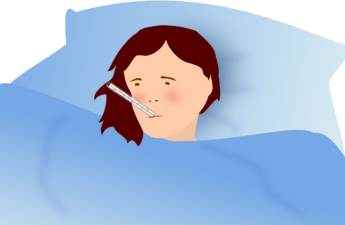
A new report by the Institute for Disease Modeling (IDM) that assesses the tradeoffs between minimizing COVID-19 related health risks and maximizing educational benefits for students when Washington’s K-12 schools resume instruction.
The report was prepared by the Bellevue-based Institute for Disease Modeling and released Friday by the Washington State Department of Health (DOH) and Public Health – Seattle & King County.
While the educational benefits of in-person learning are well established, the report shows there are still significant risks associated with returning to in-person instruction.
The report modeled the health risks of resuming in-person instruction assuming a slowly declining epidemic (0.9 effective rate) and using three hypothetical COVID-19 incidence scenarios:
- A low incidence of 20 cases per 100,000 residents in the 14 days prior to school reopening (20/100,000),
- A medium incidence of 50/100,000, and
- A high incidence of 110/100,000.
The scenarios fall within the three incidence rate bands that DOH recently established as benchmarks to guide school districts in their decision-making on resuming in-person instruction.
“What we have found is that there is no ‘zero-risk’ scenario for resuming in-person instruction in Washington state schools,” said Jamie Cohen, a co-author of the IDM report. “But our analysis shows that there are pathways to resuming limited and carefully monitored in-person instruction for younger students. This can happen only if everyone works together to minimize disease transmission in their local communities.”
Reducing the spread of COVID-19 in the community is the most important and effective way to reduce the risk to students, teachers and staff and get our children back to school as safely as possible.
Dr. Jeff Duchin, Health Officer for Public Health – Seattle & King County.
The IDM report found that if schools resume full-time in-person instruction without public health countermeasures and with high rates of disease incidence in the community (110/100,000), then 17.2 percent of students and 24.2 percent of teachers and staff could attend school while infectious.
Those risks could be substantially reduced if school districts required public health countermeasures including mask-wearing, social distancing, frequent handwashing, the segmentation of students into smaller cohorts and the implementation of rigorous daily symptomatic screening supported by testing, isolation and contact tracing.
But even with those strong countermeasures in place, up to 4.1 percent of students and 5.5 percent of teachers could still be infected between September 1 and December 1 if community incidence is high (110/100,000).
Of the school reopening scenarios considered in the report, a hybrid instruction plan that would allow children in grades K-5 to receive up to two days of in-person instruction per week on an alternating A/B schedule would minimize health risks while still providing some in-person time for younger learners.
Under this plan, students in group A would attend school on Mondays and Tuesdays, students in group B would attend school on Thursdays and Fridays and the school would be cleaned and disinfected on Wednesdays. Students in grades 6-12 would participate in remote learning only.
If such a plan were implemented and transmission rates in the community were low (20/100,000), then the percentage of students infected between September 1 and December 1 could be as low as 0.1 percent, and the percentage of teachers and staff infected could be as low as 0.2 percent.
This approach would reduce in-person attendance for all students by 83 percent while allowing the youngest students – who need in-person instruction the most – to receive up to two days of weekly instruction in classrooms.
“The report supports our guidance that full in-person learning is not wise right now given current COVID-19 transmission levels in most Washington communities,” said Lacy Fehrenbach, deputy secretary for COVID-19 response at DOH. “However, it is possible to resume some in-person learning for the children who need it most if we work to reduce the spread of COVID-19 in our communities.”
IDM’s first back-to-school report emphasized that efforts to control COVID-19 transmission in the broader community hold the key to whether Washington schools can minimize health risks associated with in-person instruction.
The report’s authors noted that there are important limitations to their analysis. The report’s analysis assumes that parents of students will not be increasing activity in the community or returning to fulltime work settings.
The report also assumes that on days when students are engaged in distance learning they will not be interacting with their peers in other settings. The report also did not account for transmission that may be associated with transportation to school and after-school care.
“There are three key messages from this report,” said Dr. Jeff Duchin, Health Officer for Public Health – Seattle & King County. “First, reducing the spread of COVID-19 in the community is the most important and effective way to reduce the risk to students, teachers and staff and get our children back to school as safely as possible. Second, there will always be some risk for COVID-19 and schools must take comprehensive steps to protect students and staff. And, third, when community COVID-19 activity decreases sufficiently, resuming in-person education with elementary students first makes most sense.”
For more COVID-19 data, visit:


